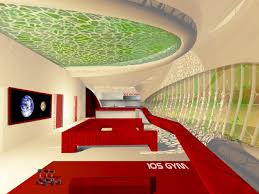
NASA is pushing the boundaries of innovation with a unique project that explores the potential of mycelium, the root-like structures of fungi, to construct future habitats in space. By studying mycelium, NASA hopes to create sustainable, eco-friendly habitats for astronauts and transform the way we approach construction both on Earth and beyond.
What is Mycelium?
Mycelium is the vegetative part of fungi, consisting of a vast network of thread-like structures called hyphae. These hyphae form a complex, natural web that can spread underground, absorbing nutrients and aiding in decomposition. What makes mycelium remarkable is its ability to bind organic matter together, forming a strong, flexible material with unique properties. This natural material is lightweight, sustainable, and can be grown in a variety of shapes and sizes.
The Potential of Mycelium for Space Exploration
As humanity looks to establish permanent colonies on the Moon, Mars, and beyond, finding the right materials for constructing habitats is critical. Traditional building materials such as concrete and metals are heavy and expensive to transport into space. Mycelium offers a lightweight alternative that can be grown on-site using local resources. NASA’s research focuses on how mycelium can be used to create habitats that are not only durable but also regenerative, meaning they can repair themselves over time.
Why Mycelium is Ideal for Space
The conditions in space are harsh—extreme temperatures, high levels of radiation, and a lack of oxygen. Mycelium has unique properties that make it suitable for space environments:Lightweight and Strong: Mycelium can grow into rigid structures that are incredibly strong while remaining lightweight, making it easier to transport.Self-Regenerating: Unlike traditional materials, mycelium can regenerate, potentially repairing itself if damaged.Environmentally Friendly: Mycelium grows from organic waste and can be decomposed back into the environment, offering a sustainable and biodegradable option for construction.Radiation Shielding: Mycelium can be engineered to provide protection from harmful space radiation, an essential factor for astronaut safety.
NASA’s Myco-architecture Project
NASA’s “Myco-architecture” project, in collaboration with researchers and innovators like the California-based firm Red House Studio, explores the potential of using mycelium to grow extraterrestrial habitats. The idea is to create buildings and structures by “growing” them on the Moon or Mars, using a combination of fungi and local resources such as Martian soil. This process could drastically reduce the cost and energy required to transport building materials from Earth.Phase
Designing Mycelium-Based Habitats
The first phase of the Myco-architecture project is focused on designing habitats that can be grown in space. The team is experimenting with creating mycelium composites that can bond with local materials to form strong, durable structures. In laboratory conditions, they’ve already managed to create prototypes of mycelium-based bricks that are lightweight, durable, and insulative.
Self-Growing Structures
The second phase of the project is exploring the possibility of habitats that could “grow” themselves once astronauts have reached their destination. Using a controlled environment, astronauts could activate the dormant mycelium spores by adding water and nutrients, allowing the fungi to grow and form the structure of the habitat over time. This would significantly reduce the need for human labor and machinery in space construction.
Earth-Based Applications of Mycelium Construction
While NASA’s project is focused on space exploration, the advancements in mycelium-based construction could have significant implications for Earth. Mycelium has the potential to revolutionize how we build structures on our planet as well. From environmentally friendly homes to biodegradable packaging, the use of mycelium could help reduce waste, lower carbon emissions, and create more sustainable cities.
Sustainable Architecture
Mycelium’s strength, lightweight nature, and ability to grow into complex shapes make it an ideal material for building eco-friendly homes and shelters on Earth. The growing popularity of mycelium in green architecture has sparked interest in creating entire buildings that are grown rather than constructed, significantly reducing the environmental impact of traditional construction materials.
Reducing Waste and Carbon Footprints
The construction industry is one of the largest producers of waste and carbon emissions. By incorporating mycelium into building materials, we could significantly lower the carbon footprint of new buildings. Additionally, mycelium-based structures are fully biodegradable, meaning they could be easily composted or returned to the earth after their use, reducing landfill waste.
The Future of Mycelium in Space Exploration
NASA’s mycelium project is still in its early stages, but the potential for future space habitats is promising. If successful, mycelium could become a critical part of space exploration, helping humanity establish long-term colonies on the Moon, Mars, and beyond. With its ability to be grown on-site, mycelium provides a lightweight, eco-friendly, and renewable resource that could redefine how we approach building in space.
Expanding Beyond Habitats
NASA’s research into mycelium could extend beyond just building habitats. The fungi’s ability to adapt and grow in various environments means it could be used for other purposes in space, such as producing food, creating clothing, or even recycling waste. The possibilities are vast, and mycelium could play a key role in creating self-sustaining space colonies.
NASA’s mycelium project is pushing the boundaries of what’s possible in space exploration. By harnessing the natural properties of fungi, researchers hope to develop sustainable, regenerative habitats that can be grown in space. As the project advances, it not only holds the potential to transform life in space but also presents innovative solutions for sustainable construction on Earth. Mycelium’s versatility and environmental benefits make it a material of the future, one that could help humanity build a more sustainable world—both on our planet and beyond.
Subscribe to Follow Global Trends for daily global news.
Find Out How To Make Money As A Full Time Writer/Blogger Guide.
To Advertise, Advertise Your Affiliate Links on FollowGlobalTrends.com for Just $1 Per Link Per Month!
Related Articles
Growing mushroom houses
Moon habitat
Mycelium construction
Lunar architecture
Sustainable building materials
Space habitation
Fungal growth
Myco-architecture
Extraterrestrial construction
Lunar environment
Renewable resources
Self-repairing materials
Space exploration
Written By: Enyoghasi Ngozi pricillia
,

